Modern-day martial arts are used for anything from strength training to self-defense training to training communication between the mind and body. But most of these martial arts (despite the relatively peaceful adults and kids who practice them inside air-conditioned dojos in strip malls across many countries) have rough roots, starting as deadly forms of self-defense and attack. Some forms included here gave birth to newer forms and some forms have developed within the past century. Regardless, they are all some seriously dangerous and often lethal martial art styles. Since some names such as Karate and Kung Fu are umbrella terms for groups of individual martial arts, they are not included at large on this list. Also, as a disclaimer for all our devoted martial arts practitioners, it’s nearly impossible to truly rank the most dangerous or most deadly martial arts techniques as reliable numbers and definitions of deadliness don’t exist. So this list focuses on 25 of the most dangerous and/or deadly martial arts that exist, not in any particular order (though stronger techniques were placed to the front). What do you think should be number one or in the top five? Share with your sensei this list of the 25 most dangerous martial arts ever created.

Boxing
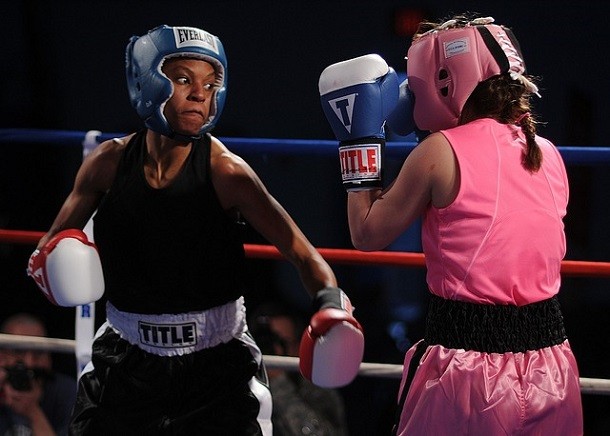 Source: WBC Boxing, Image: Pixabay
Source: WBC Boxing, Image: Pixabay Formally known as Pugilism, Boxing is one of the most well-known martial arts practiced today (and one of the oldest – it dates back to Ethiopia in 6,000 B.C.). The ancient Greeks first elevated boxing to an organized sport by including it in the Olympic Games of B.C. 688 and it remains an Olympic sport to this day. Boxing’s focus on striking the face makes it a particularly lethal martial art despite the toned-down events which are broadcast on television today.
Shaolin Kung Fu
 Source: "Encyclopedia of Shaolin Martial Arts", Shi Deqian & Shahar, Meir (December 2001). "Ming-Period Evidence of Shaolin Martial Practice", Image: Wikipedia
Source: "Encyclopedia of Shaolin Martial Arts", Shi Deqian & Shahar, Meir (December 2001). "Ming-Period Evidence of Shaolin Martial Practice", Image: Wikipedia Though Kung Fu is an umbrella term for various martial arts, the variety of Kung Fu originating from and practiced at the Shaolin Monastery in China’s Hunan province is one of the best-known (and one of the most lethal). Lawlessness in the surrounding provinces and the monastery’s need to be protected led to the rise of Shaolin Kung Fu, often practiced by the Buddhist monks for up to five hours per day.
Varma Kalai
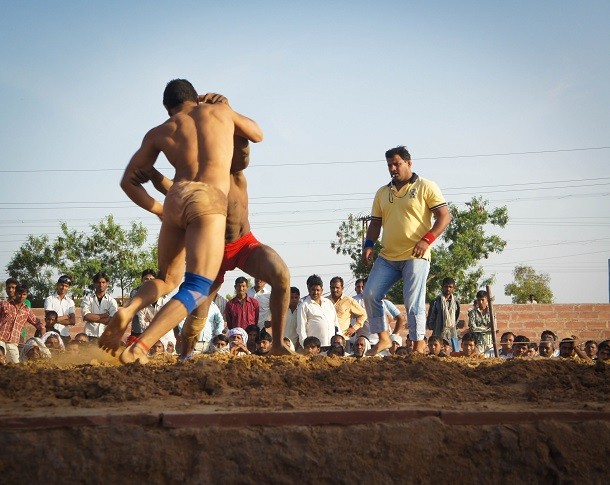 Source: Zarrilli, Phillip B. (1992). "To Heal and/or To Harm: The Vital Spots (Marmmam/Varmam) in Two South Indian Martial Traditions, Image: Wikipedia
Source: Zarrilli, Phillip B. (1992). "To Heal and/or To Harm: The Vital Spots (Marmmam/Varmam) in Two South Indian Martial Traditions, Image: Wikipedia Varma Kalai is an ancient Indian martial arts style traced back to the god Shiva and his instruction. More than just a fighting technique, Varma Kalai includes aspects of traditional massage where pressure points are used to heal as well as aspects of Ayurveda to treat paralysis and nervous disorders, among other things. Due to practitioners’ superior knowledge of the body, the combat version – Marma Adi – focuses on striking pressure points in the nerves and organs in order to incapacitate an opponent.
Jeet Kune Do
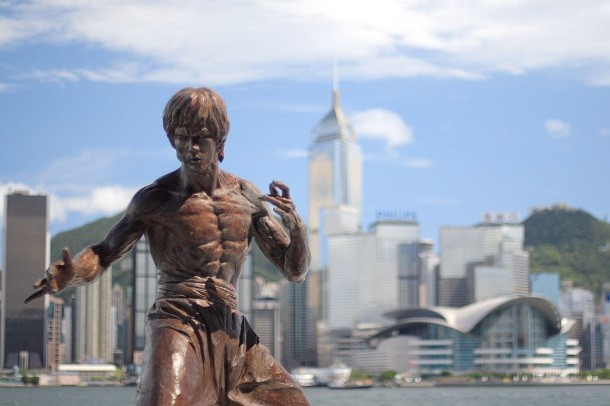 Source: Black Belt Magazine, Image: Wikimedia
Source: Black Belt Magazine, Image: Wikimedia Jeet Kune Do is the fighting system developed by renowned martial arts expert Bruce Lee (Chinese name: Lee Jun-fan 李振藩). Though more a philosophy than pure martial arts, it is still often considered for discussion in the martial arts world. Using the least possible movement with the greatest possible impact and intercepting one’s opponent as they begin an attack, Jeet Kune Do focuses on speed and a smooth flow between attack styles. Lee often referred to this dangerous style as the “art of expressing the human body”.
Ninjitsu
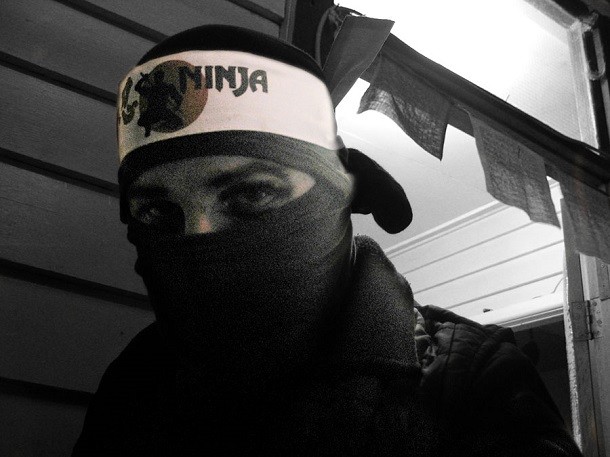 Source: Hatsumi, Masaaki (1981). Ninjutsu, History and Tradition, Image: Wikimedia
Source: Hatsumi, Masaaki (1981). Ninjutsu, History and Tradition, Image: Wikimedia The collection of survivalist techniques in war-town feudal Japan, Ninjutsu is practiced by the shinobi (known as ninjas outside Japan). Part martial art, part trickery, Ninjitsu and its practitioners frequently were employed as assassins or spies. Master of stealth, the shinobi were also skilled archers and runners. Though they could fight hand-to-hand, these dangerous warriors often employed weapons such as shurikens and the katana.
Wing Chun
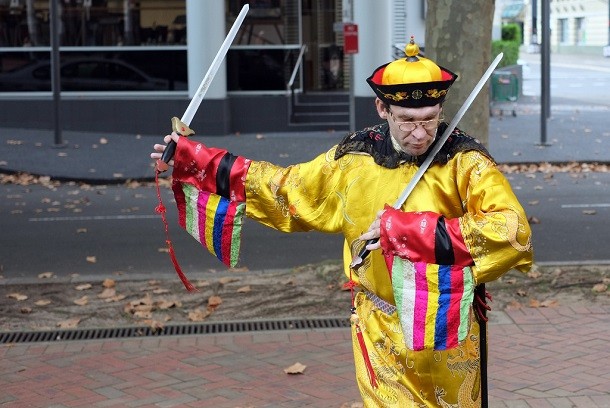 Source: Kung Fu Magazine, Image: matthewwu88 via Flickr
Source: Kung Fu Magazine, Image: matthewwu88 via Flickr A martial arts form which heavily influenced Bruce Lee’s Jeet Kune Do, Wing Chun is a Chinese martial art utilizing a high amount of close combat. Central to the art is the concept of rootedness where a practitioner must focus on balance and proper stance to brace them against the ground (leading to a more powerful attack). A balanced yet dangerous martial arts form, Wing Chun insists on proper structure lest one’s opponent exploit their defenses.
Bakom
 Source: Puch Bezada, Roberto (2004), Bakom: El Arte Marcial Peruano, Image: Wikimedia
Source: Puch Bezada, Roberto (2004), Bakom: El Arte Marcial Peruano, Image: Wikimedia With a focus on disrupting an opponent’s balance to catch them off guard, Bakom (also known as Vacón or Lucha Total) is a Peruvian street fighting style. Created by Roberto Puch Bezada, Bakom used to be seen only in secret underground fights with no rules other than no hits to the genitals or throat. Otherwise, the goal is to inflict as much injury as possible to one’s opponent.
Kalaripayattu
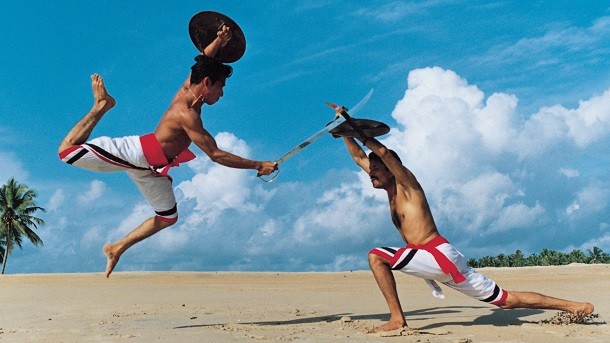 Source: Discoverychannel.co.uk & J. R. Svinth (2002). A Chronological History of the Martial Arts and Combative Sports., Image: Wikipedia
Source: Discoverychannel.co.uk & J. R. Svinth (2002). A Chronological History of the Martial Arts and Combative Sports., Image: Wikipedia Originating from the south-western Indian state of Kerala, Kalaripayattu is regarded as one of the oldest martial arts styles in the world. Though the original styles employed weapons, today’s sparring practices forgo them. Only the most disciplined and wise Kalaripayattu practitioners are taught techniques where the mere touching of a vital point can disable or kill their attacker. Despite the masters’ use of massage – they massage their students to increase flexibility to treat muscle injuries – this is a seriously deadly form of martial arts which played an important role over centuries of South Indian fighting, especially between the Chera and Chola dynasties.
French Savate
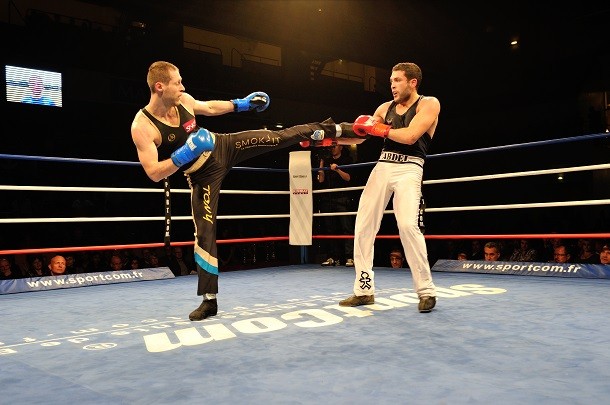 Source: "L'art de la savate", Michel Casseux, Image: Wikipedia
Source: "L'art de la savate", Michel Casseux, Image: Wikipedia Traditionally derived in the Parisian slums, French Savate has gruesome roots. Partially drawing from Greek Pankration, Savate focuses on low kicks (rarely above the groin) aimed at breaking an opponent’s bones. As one could go to prison for up to six months for hitting someone with a closed fist, this dangerous fighting style utilized open-handed blows, especially on the face to stun one’s adversary.
Hapkido
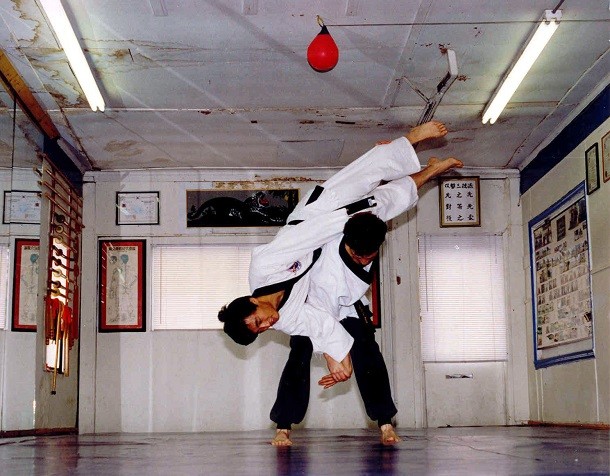 Source: World Hapkido Federation, Image: Wikipedia
Source: World Hapkido Federation, Image: Wikipedia Though Hapkido shares similar roots to #15, it is a uniquely different style. A martial art focusing on self-defense, Hapkido uses joint locks, throwing, and grappling in addition to traditional weapons such as the sword, nunchuk, and rope. Good for short- and far-range fighting, this dangerous Korean style is known for its use of jump kicks and pressure point strikes.
Aikido
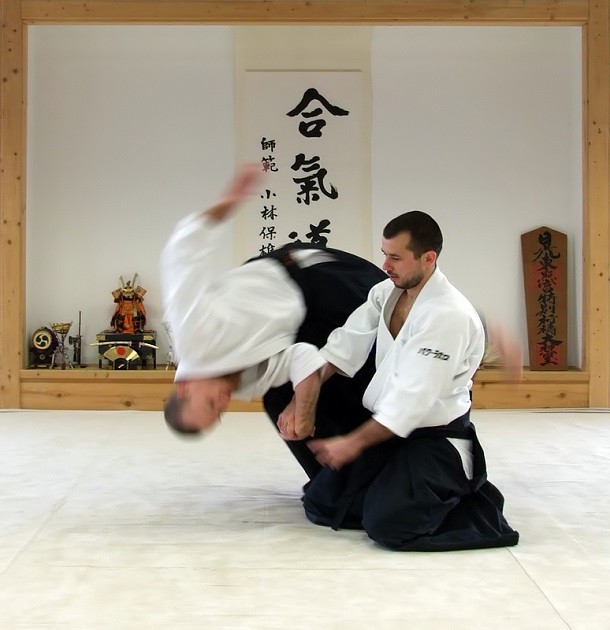 Source: Saotome, Mitsugi (1989). The Principles of Aikido. & Ueshiba, Kisshōmaru (2004). The Art of Aikido: Principles and Essential Techniques., Image: Wikipedia
Source: Saotome, Mitsugi (1989). The Principles of Aikido. & Ueshiba, Kisshōmaru (2004). The Art of Aikido: Principles and Essential Techniques., Image: Wikipedia Aikido is a unique martial arts form on our list in the way it approaches fighting. Developed in Japan, Aikido was founded by Morihei Ueshiba to integrate his religious beliefs with his studies of philosophy and the martial arts. One of Ueshiba’s primary tenants was defending one’s self while simultaneously not seriously injuring the attacker. Thus, this seemingly soft martial art is massively effective, redirecting the momentum of an opponent’s attack and throwing them to negate their attack. Despite its focus on preventing injury, Aikido is one of the best martial arts forms in the world.
San Soo
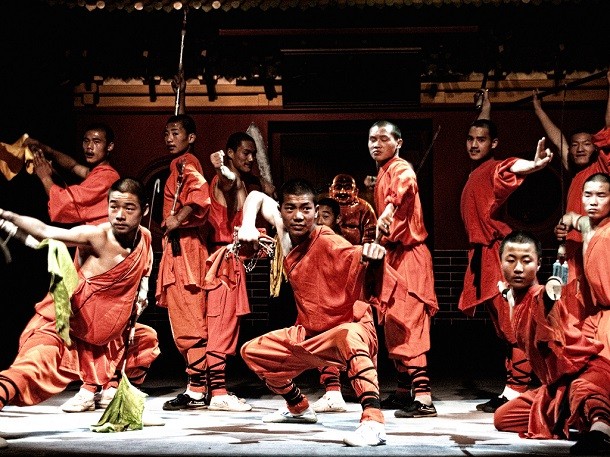 Source: Black Belt Magazine, Image: kevinpoh via Flickr
Source: Black Belt Magazine, Image: kevinpoh via Flickr A variety of Kung Fu, San Soo was brought to the United States by famous martial artist Jimmy H. Woo. Its title as one of the deadliest martial arts in the world is confirmed by its lack of competitions or tournaments (as they would be too dangerous). Since the focus is on rapidly incapacitating one’s attacker via knockout or death, San Soo is only practiced under strict guidance. To eliminate a threat, one’s opponent is caught off-balance before striking the neck, groin, knees, or other sensitive areas.
Kapu Ku’ialua
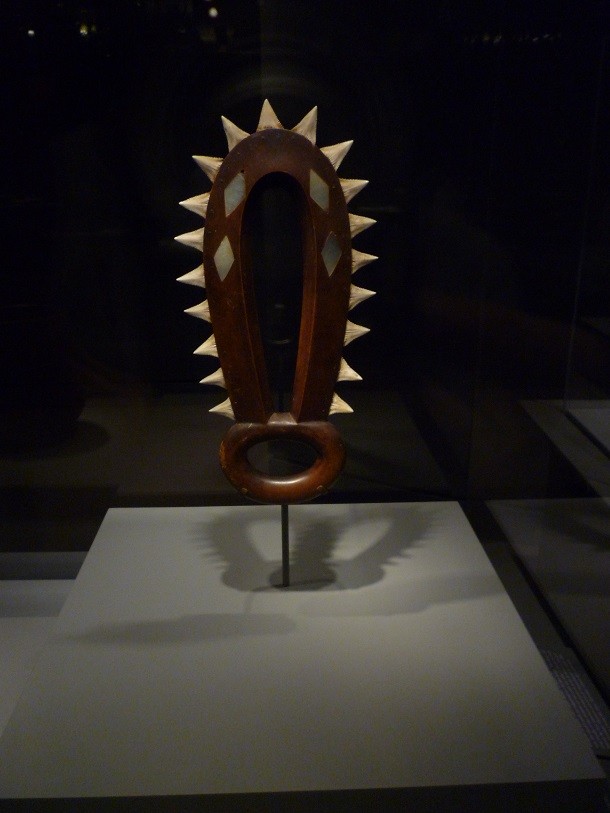 Source: Black Belt Magazine, Image: Wikipedia
Source: Black Belt Magazine, Image: Wikipedia Unique as a martial arts for its focus on bone-breaking, Kapu Ku’ialua is an ancient martial art from Hawaii. Also employing pressure point manipulation, joint locks, and even open ocean warfare, Kapu Ku’ialua was only taught to professional warriors, guards, and royal family members (except in times of war). Common weapons show a reliance on what was around, including canoe oars and the leiomano: a shark-tooth-lined instrument used for clubbing or striking opponents.
Brazilian Jiu-Jitsu
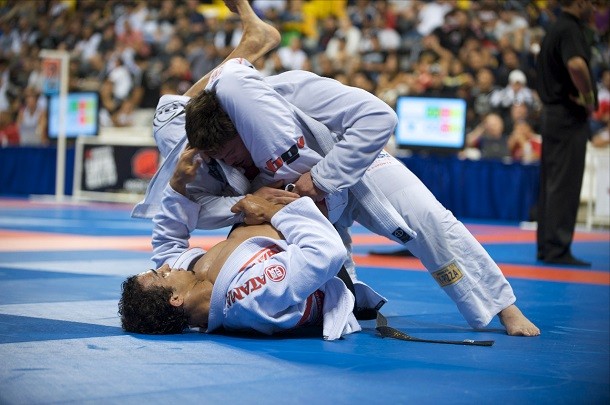 Source: Edward, Chad. "Untangling a sport that transcends style",The Cincinnati Enquirer., Image: Wikipedia
Source: Edward, Chad. "Untangling a sport that transcends style",The Cincinnati Enquirer., Image: Wikipedia Deriving a strong base from #10’s ground-fighting basics, Brazilian Jiu-Jitsu is a powerful martial art for someone of any size. Known as BJJ for short, Brazilian Jiu-Jitsu concentrates on technique, leverage, and grounding one’s opponent to take away the advantage of being larger or stronger. Once the field is leveled, the BJJ practitioner uses submissions such as choke-holds and joint locks to incapacitate their opponent.
Lethwei
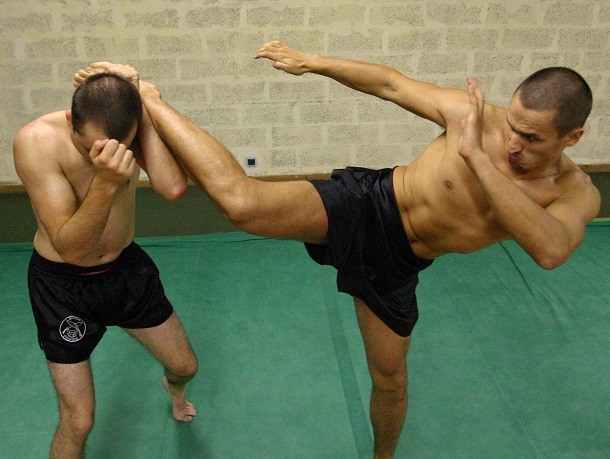 Source: Fightland Blog, Image: Wikimedia
Source: Fightland Blog, Image: Wikimedia Lethwei (also spelled Let Whay) is a Burmese (Myanmar) martial art which only uses the body. Besides the standard punches, elbows, etc., Lethwei also invokes head-butts and raking knuckle strikes, making it an immensely dangerous martial arts form. During its formation, spectators from all parts of society would come to watch a Lethwei match, just as the Romans went to see gladiators at the Colosseum. Every fight would go until one fighter was KO’d or didn’t have the strength to continue.
Judo
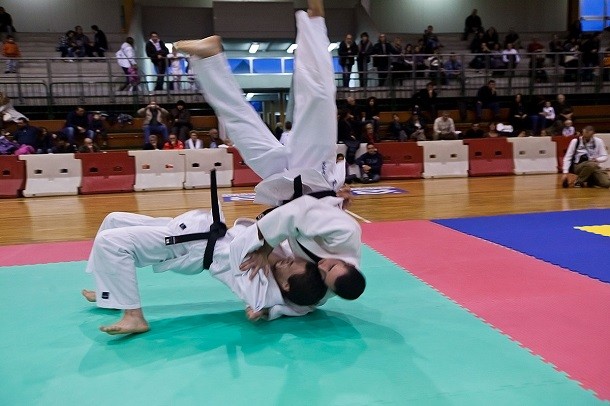 Source: Inman, Roy (2005), The Judo Handbook, Image: Wikipedia
Source: Inman, Roy (2005), The Judo Handbook, Image: Wikipedia Judo is a Japanese combative martial art which largely contributed to the development of #12 (Brazilian Jiu-Jitsu) and #2 on our list. Though it means “the gentle way”, Judo is a full-contact, dangerous form of martial arts. A fighter’s main goals include taking an opponent down to the ground to immobilize them through pinning or to force their surrender with a joint lock or choke hold.
LINE
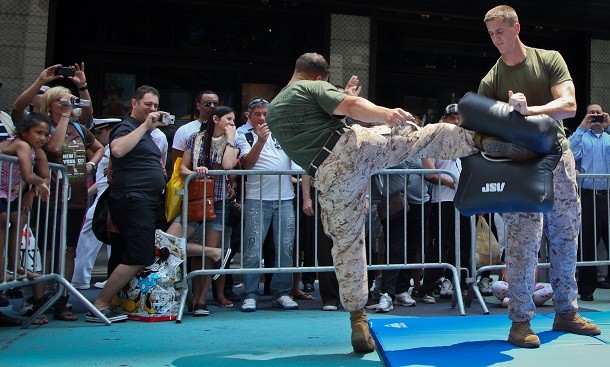 Source: Fight Times & MCO 1500.54A, Image: Wikimedia
Source: Fight Times & MCO 1500.54A, Image: Wikimedia A close-quarters combat style formerly used by various branches of the United States military, LINE – Linear Infighting Neural Override Engagement – includes death to one’s opponent as the result of properly executed technique. Other aspects include its use in visibility-impaired situations (e.g. nightime, smoke) and while under severe fatigue. Since LINE is meant to end an opponent’s life, it was not useful in situations which did not require lethal force (e.g. peacekeeping missions); thus, the Marine Corps replaced LINE with the MCMAP (Marine Corps Martial Arts Program) in 2002.
Taekwondo
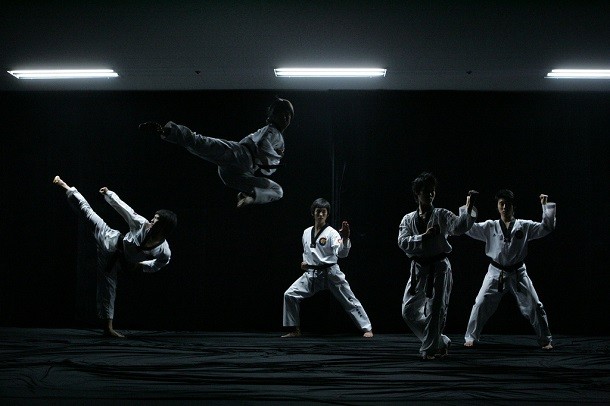 Source: Sik, Kang Won; Lee Kyong Myung (1999). A Modern History of Taekwondo., Image: koreanet via Flickr
Source: Sik, Kang Won; Lee Kyong Myung (1999). A Modern History of Taekwondo., Image: koreanet via Flickr One of the younger martial arts styles on our list, Taekwondo originated in Korea in the 1940’s and 1950’s. An Olympic sport since the 2000 games in Sydney, Taekwondo is known for its high-kicks and rapid-fire jumping and spinning kicks. This powerful and dangerous martial art began once Korean martial artists living in Japan during its occupation of the Korean peninsula returned home after World War II. They established their own schools (“kwans”) with individuals styles which – at the request of South Korean President Syngman Rhee – were merged into a unified Korean martial art.
Systema
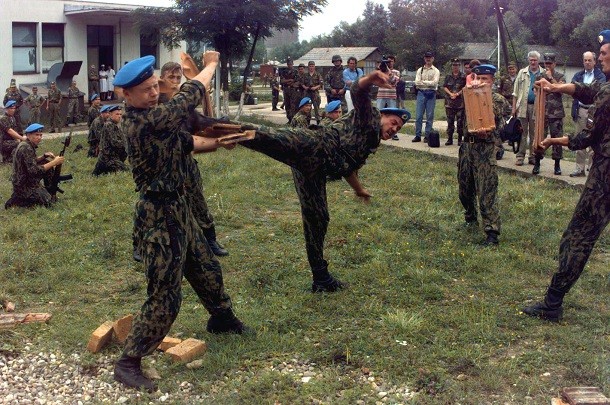 Source: Black Belt Magazine, Image: Wikimedia
Source: Black Belt Magazine, Image: Wikimedia A lesser-known martial art, Systema originated in Russia. With a strong focus on breathing and fluidity, Systema takes advantage of pressure points and an opponent’s momentum to debilitate attacks. Besides hand-to-hand combat, Systema often involves the use of knives or firearms, making it a deadly martial art for any situation.
Muay Thai
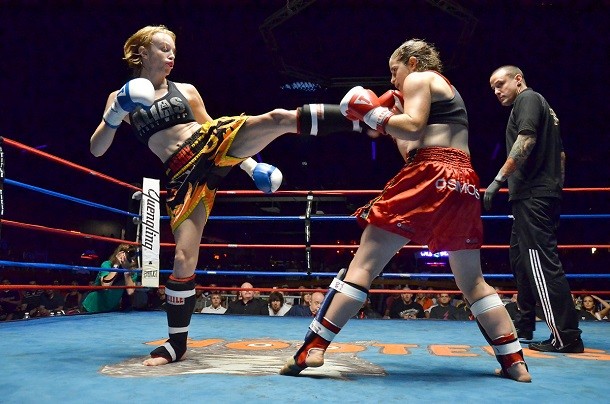 Source: Thaiboxing.com, Image: Wikimedia
Source: Thaiboxing.com, Image: Wikimedia One of the fastest growing versions of martial arts, Muay Thai traces its roots to Thailand. Known as “the art of eight limbs” due to its use of fists, elbows, knees, and feet, Muay Thai has a stronger focus than other dangerous styles on clinch fighting in which opponents grapple in a clinch position, sometimes resulting in a takedown or throw. During battles between Burma (Myanmar) and Siam (Thailand) in 1767, legendary Siamese fighter Nai Khanomtom was captured. His captors’ mistake was allowing him to fight for his freedom. He easily won the match and, upon returning to Siam, his fighting style was soon declared a national sport.
Pencak Silat
 Source: Tentara Nasional Indonesia & "The Malay art of self-defense: silat seni gayong", Sheikh Shamsuddin, Image: Wikimedia
Source: Tentara Nasional Indonesia & "The Malay art of self-defense: silat seni gayong", Sheikh Shamsuddin, Image: Wikimedia Related to various other martial arts from around Southeast Asia, Pencak Silat makes full use of the body for both attacking and defending. Practiced throughout Indonesia, Pencak Silat varies widely by discipline; some focus on attacking through punches and kicks, some prefer locks and grabs, and some prioritize spiritual development over fighting. Similar to the ancient martial arts, this dangerous fighting technique used weapons before hand-to-hand combat. Though Pencak Silat is an extracurricular activity in Indonesian schools, it also is the basic unarmed martial art taught to the Indonesian National Armed Forces and is included in the Southeast Asian Games.
Krav Maga
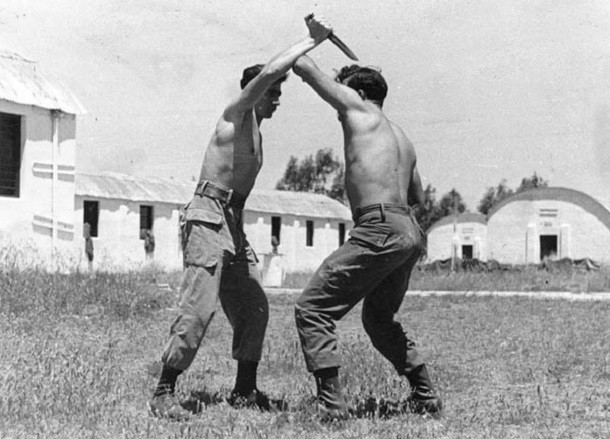 Source: The Guardian & BBC, Image: Wikipedia
Source: The Guardian & BBC, Image: Wikipedia It’s a popularly purported myth that Krav Maga was designed by the Israeli military – but it’s not true. It was developed for the Israeli military. Hungarian-Israeli martial artist Imi Lichtenfeld used his training to defend Bratislava’s Jewish quarter in the 1930’s. After moving to Israel in the late-1940’s, Kichtenfeld is the one who helped the Israeli Defence Forces develop a martial arts program. Key tenants of this lethal martial art include high aggression and a focus on threat neutralization.
Arnis/Eskrima/Kali
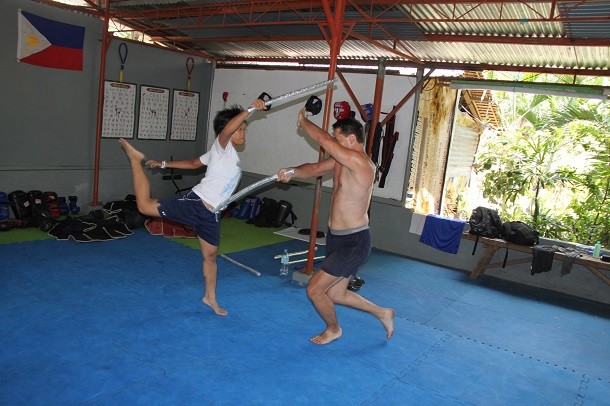 Source: Filipino Warrior Arts Research Society & EyewitnesstoHistory.com, Image: borteschristian via Flickr
Source: Filipino Warrior Arts Research Society & EyewitnesstoHistory.com, Image: borteschristian via Flickr The national sport of the Philippines, Arnis (also known as Eskrima or Kali) emphasizes weapon-based fighting using implements such as sticks, knives, and blades. During the Spanish colonization of the Philippines, swords were outlawed and for good reason: Filipino tribesmen were seriously skilled at close-quarters combat, hacking their opponents with a broad blade or even the smaller blades they carried around after the Spanish arrived. (Ferdinand Magellan, the first circumnavigator of the globe, is said to have been killed via Arnis.)
Sambo
 Source: United Kingdom Sambo Association, Image: Wikimedia
Source: United Kingdom Sambo Association, Image: Wikimedia Sambo (the combat variety rather than the sports or freestyle varieties) is without-a-doubt one of the most dangerous martial arts in the world. Developed in the former U.S.S.R., SAMBO is the acronym for “SAMozashchita Bez Oruzhiya”, translated as “self-defense without weapons”. Developed to improve hand-to-hand fighting in the military, Sambo heavily utilizes striking and grappling. Like all varieties, Sambo focuses on speed and throwing one’s opponent.
Vale Tudo
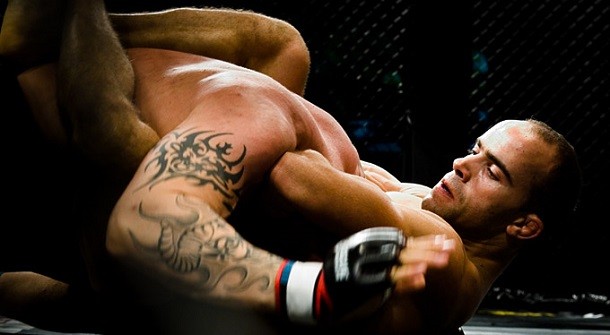 Source: GrappleArts.com, Image: Wikipedia
Source: GrappleArts.com, Image: Wikipedia The Brazilian predecessor to today’s mixed martial arts, Brazil’s Vale Tudo martial arts style is one of the most lethal and dangerous martial arts in the world. Translated as “No Holds Barred” or “Anything Goes”, most Vale Tudo matches today happen on the underground circuit due to their bloody nature. A full-contact sport, Vale Tudo (just like Brazil) has been influenced by many different sources. Most Brazilian media channels won’t televise this dangerous martial art due to its high levels of violence.
So which martial art do you think is the most dangerous? Are there any not in this list you think should have been included?”



























